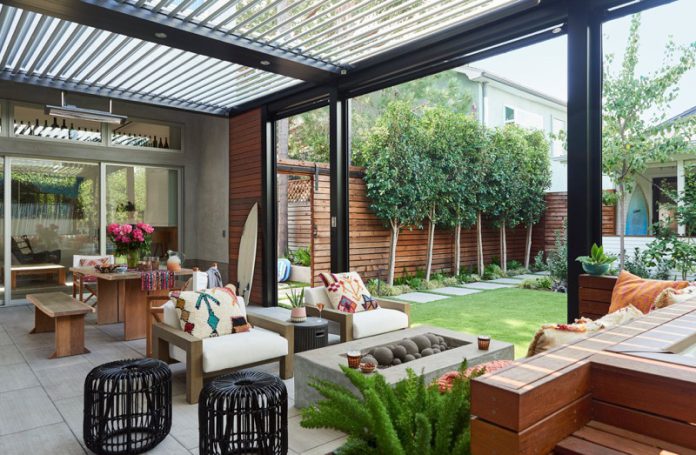In an era defined by environmental consciousness, the concept of sustainable living has transcended a mere trend to become a fundamental lifestyle choice. This comprehensive three-part series embarks on an insightful journey to unravel the intricate landscape of eco-friendly homes, delving into their multifaceted manifestations and profound impact on the ever-evolving realm of housing.
Part 1: Understanding the Essence of Sustainable Living
The Rise of Eco-Friendly Homes:
As we navigate through the complexities of modern living, there’s a growing recognition that our choices profoundly impact the environment. This realization has given rise to a surge in eco-friendly homes—residences designed not just for aesthetic appeal but as conscientious responses to ecological challenges.
Beyond Aesthetics:
While the allure of sleek designs and contemporary aesthetics remains integral to home preferences, the essence of eco-friendly living extends far beyond appearances. At its core, sustainability in housing signifies a commitment to minimizing the environmental footprint associated with construction, energy consumption, and daily living.
Energy Efficiency and Renewable Solutions:
A cornerstone of eco-friendly homes is energy efficiency. The incorporation of renewable energy solutions, such as solar panels and energy-efficient appliances, reflects a paradigm shift towards reducing reliance on traditional, often non-renewable, energy sources. Homeowners increasingly seek not only to minimize utility costs but also to contribute to a more sustainable energy landscape.
Material Choices for a Greener Future:
Sustainable living manifests in the very materials that form the foundations of our homes. From reclaimed wood to recycled steel and environmentally friendly insulation, the materials chosen for construction play a pivotal role in reducing the demand for new resources. This conscientious selection fosters durability, minimizes waste, and contributes to the overall eco-friendly ethos.
Balancing Nature and Urban Living:
Eco-friendly homes aim to strike a harmonious balance between urban living and the natural environment. Innovative designs prioritize elements like natural light, cross-ventilation, and green spaces. These features not only enhance the overall well-being of occupants but also foster a sense of connection with nature, a crucial aspect often overlooked in traditional housing.
A Shift in Homebuyers’ Priorities:
The evolving landscape of eco-friendly homes is not just a reflection of architectural trends; it mirrors a fundamental shift in homebuyers’ priorities. The modern homeowner is increasingly discerning, valuing sustainability features as essential criteria in the search for the perfect residence. This shift in consumer behavior is reshaping real estate markets globally, prompting developers and professionals to incorporate green practices into their projects.
Join us on this exploration of sustainable living, where we’ll unravel the layers of eco-friendly homes. Subsequent parts will delve into specific eco-conscious technologies, explore sustainable community planning, and showcase case studies highlighting the successful integration of green living practices into diverse housing landscapes. Stay tuned for a deeper understanding of the eco-friendly home trend and its transformative impact on the way we inhabit the world around us.
Part 2: The Nuances of Eco-Friendly Technologies in Modern Homes
As we unravel the intricate web of eco-conscious technologies contributing to the green revolution in modern housing, it’s essential to recognize that embracing sustainability can sometimes be a substantial investment. While these innovative solutions undoubtedly enhance energy efficiency and reduce environmental impact, the costs associated with implementing such technologies may vary.
Smart Home Integration: Balancing Innovation and Affordability
The integration of smart home technologies is a hallmark of sustainable living. However, the initial investment in smart devices and systems can be a consideration for homeowners. Striking a balance between innovation and affordability is crucial, ensuring that the benefits of these technologies align with your budget and long-term sustainability goals.
Solar Power Solutions: Weighing the Initial Cost Against Long-Term Savings
Harnessing solar power is a commendable step towards sustainable energy. Yet, the installation of solar panels involves an upfront cost. While the long-term savings on energy bills and the positive environmental impact are undeniable, homeowners need to evaluate their financial capacity and the time it takes for the investment to pay off.
Energy-Efficient Appliances: Financial Considerations for Sustainable Living
The transition to energy-efficient appliances is a significant aspect of eco-friendly homes. Homebuyers must weigh the immediate cost of upgrading to these appliances against the long-term benefits of reduced energy consumption. Careful financial planning ensures that the investment aligns with the overall budget for sustainable living.
Water Conservation Technologies: Balancing Eco-Friendliness and Affordability
Implementing water conservation technologies, such as low-flow toilets and rainwater harvesting, contributes to sustainable living. However, homeowners need to assess the costs associated with installing these systems against the expected savings and environmental impact over time.
Green Building Certifications: Investing in Sustainability
Homes with green building certifications offer undeniable environmental benefits. Yet, obtaining these certifications may involve additional expenses related to meeting specific criteria. Homeowners considering such certifications should factor these costs into their overall budget for a holistic approach to sustainable living.
Innovative Insulation and Ventilation: Assessing Upfront Costs for Long-Term Gains
Efficient insulation and ventilation systems contribute to energy savings and enhanced comfort. However, homeowners should be aware of the upfront costs associated with installing advanced insulation materials and ventilation systems. A careful evaluation of these expenses against the long-term gains is essential for informed decision-making.
While the journey towards a sustainable home may involve initial costs, it’s important to view these investments as contributions to a greener, more environmentally responsible future. In our next segment, we shift our focus to sustainable community planning, exploring how entire neighborhoods can embrace eco-conscious practices for a harmonious coexistence with nature.
Considering the financial aspects of transitioning to an eco-friendly home, explore the efficient process of selling your current property for cash in Maryland. Discover how a fast cash sale can provide the financial flexibility needed.
Part 3: Sustainable Community Planning: Fostering Eco-Friendly Neighborhoods
As we conclude our exploration of sustainable living, it’s imperative to shift our focus from individual homes to the broader canvas of community planning. The creation of eco-friendly neighborhoods plays a pivotal role in fostering a collective commitment to environmental conservation. Let’s delve into the intricate layers of sustainable community planning and how it contributes to a harmonious coexistence with nature.
Green Spaces and Urban Planning: Nurturing Biodiversity Amidst Concrete
Sustainable communities prioritize green spaces within urban planning. Parks, community gardens, and preserved natural areas contribute not only to the aesthetic appeal of the neighborhood but also to the preservation of biodiversity. The strategic integration of greenery enhances air quality, provides habitats for wildlife, and fosters a sense of well-being among residents.
Walking and Cycling Infrastructure: Reducing Carbon Footprints in Commuting
Promoting alternative modes of transportation, such as walking and cycling, is a hallmark of eco-friendly community planning. Well-designed infrastructure that prioritizes pedestrian and cyclist safety not only reduces reliance on carbon-emitting vehicles but also promotes a healthier and more active lifestyle.
Waste Management Strategies: From Recycling to Composting
Sustainable communities implement comprehensive waste management strategies that go beyond conventional recycling. Incorporating composting programs, incentivizing waste reduction initiatives, and embracing circular economy principles contribute to minimizing the environmental impact of daily waste generation.
Renewable Energy Initiatives at the Community Level
Scaling up from individual homes, sustainable communities explore renewable energy initiatives at a broader scale. Collective efforts to harness solar or wind energy for community facilities, street lighting, and shared spaces contribute to reducing reliance on traditional energy sources.
Community Education and Engagement: Building a Culture of Sustainability
The success of sustainable community planning hinges on education and engagement. Empowering residents with knowledge about eco-friendly practices, conducting workshops on energy conservation, and fostering a sense of shared responsibility create a culture where sustainability becomes a way of life.
Collaboration with Local Businesses: Supporting Sustainable Practices
Eco-friendly neighborhoods extend their impact by collaborating with local businesses that share a commitment to sustainability. From sourcing locally-produced goods to promoting eco-conscious practices in commercial establishments, these partnerships contribute to a more cohesive and environmentally conscious community.
Accessible Public Transportation: Reducing Individual Carbon Footprints
Efficient and accessible public transportation systems are integral to sustainable communities. By reducing the reliance on individual vehicles, well-planned public transportation contributes to lower carbon footprints, less traffic congestion, and enhanced mobility for residents.
In conclusion, sustainable living goes beyond the walls of individual homes. It blossoms in communities that recognize the interconnectedness of environmental stewardship, social well-being, and economic vitality. By embracing eco-friendly practices at both the individual and community levels, we pave the way for a greener and more sustainable future.















